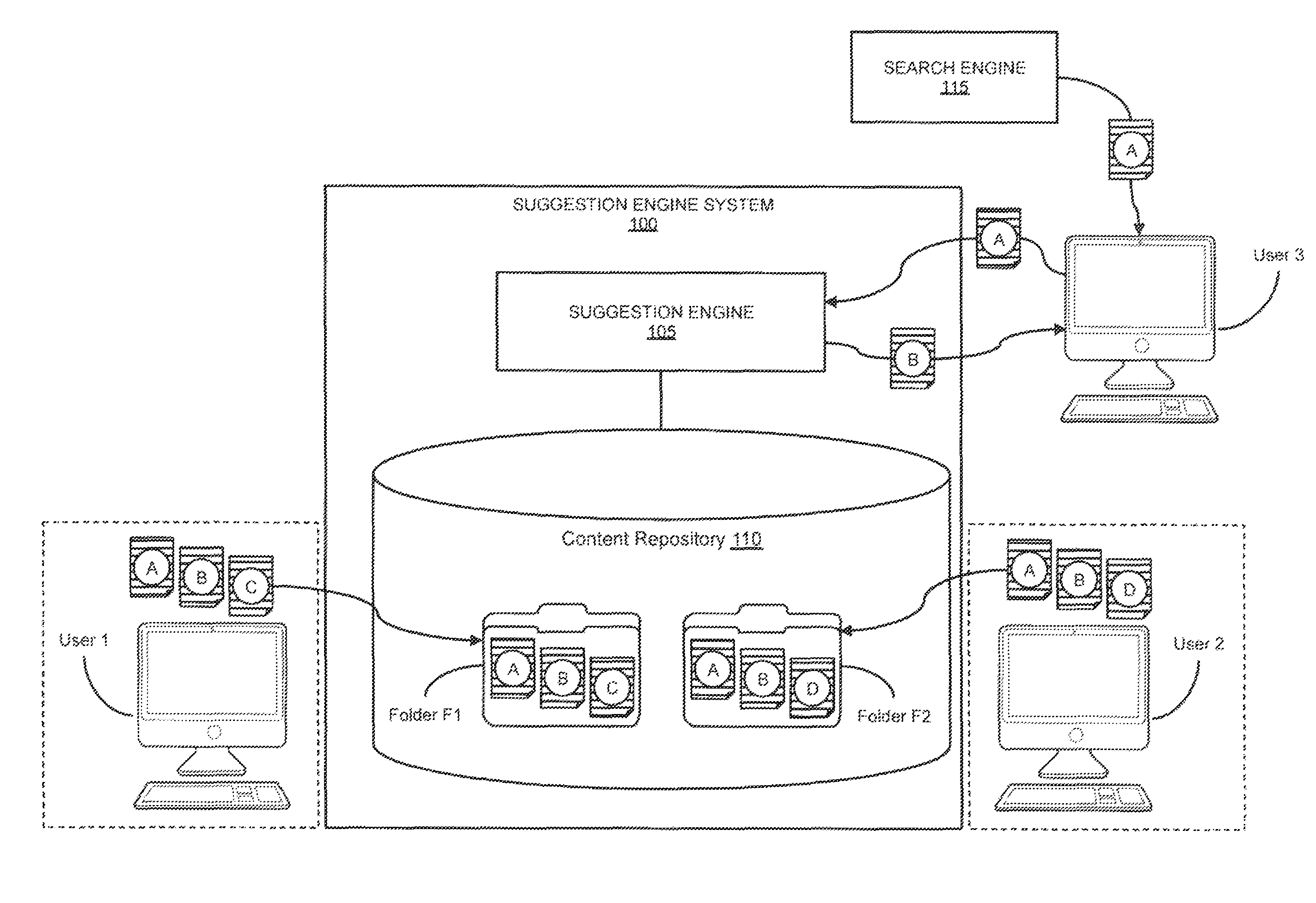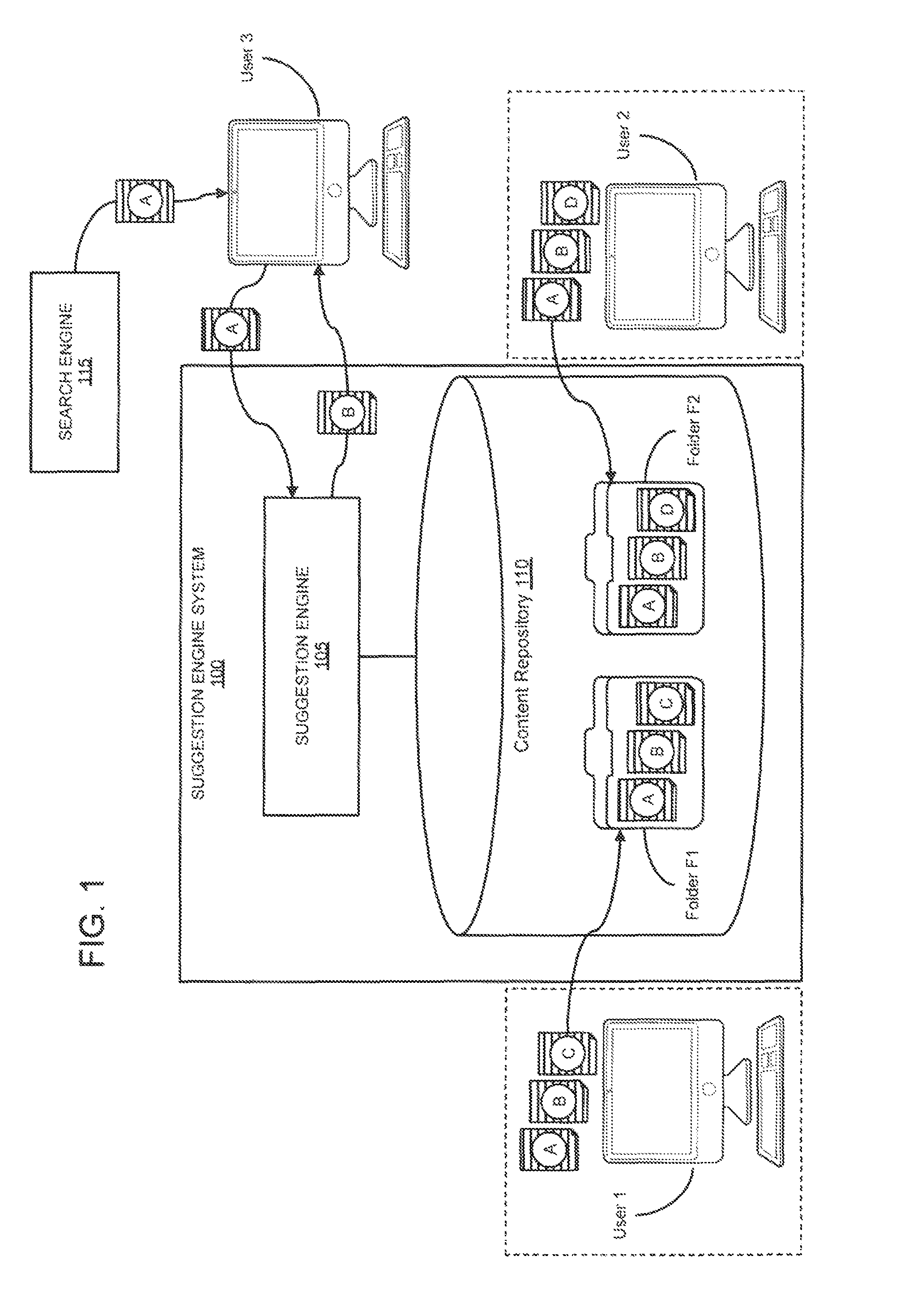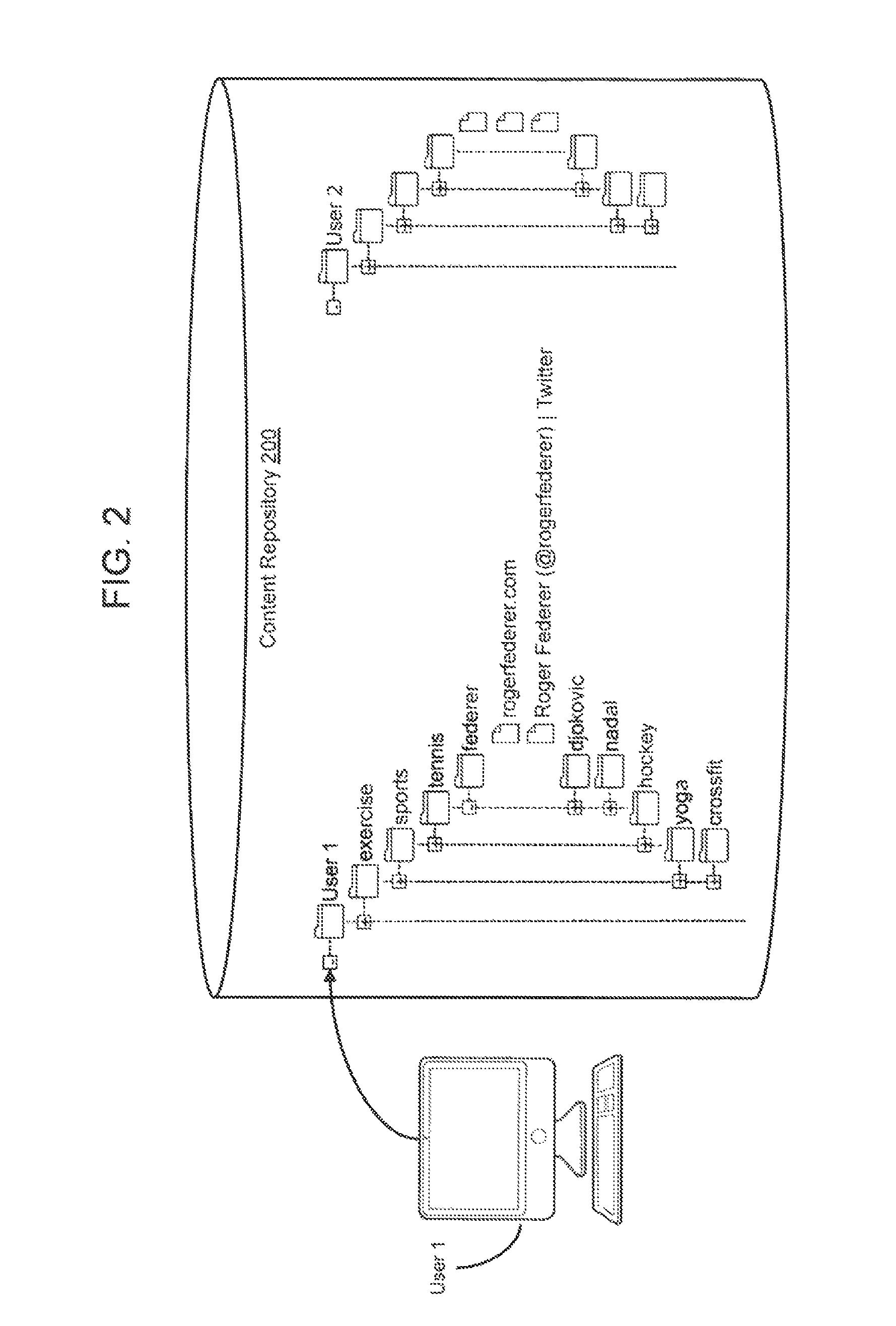Deriving semantic relationships based on empirical organization of content by users
a semantic relationship and user-centered technology, applied in the field of system and method for improving the search for content, can solve the problems of difficulty in tagging and keyword searching, less than ideal methodology for both content users and content providers, and the combination of keywords may not be the sam
- Summary
- Abstract
- Description
- Claims
- Application Information
AI Technical Summary
Benefits of technology
Problems solved by technology
Method used
Image
Examples
Embodiment Construction
[0029]Embodiments of the present invention will be described with reference to the accompanying drawings, wherein like parts are designated by like reference numerals throughout, and wherein the leftmost digit of each reference number refers to the drawing number of the figure in which the referenced part first appears.
Overview of a Suggestion Engine
[0030]As summarized above, embodiments of the present invention provide a novel approach for suggesting content items to supplement a user's search for information in an information space. An information space can be any body of information having individual items of content. An example of an information space is the World Wide Web (“WWW” or “Web”) comprising a system of interlinked hypertext documents accessed via the Internet.
[0031]To provide content suggestions, embodiments of a suggestion engine can search a content repository (also referred to herein as a “data store”), and based on a variety of techniques discussed below, identify ...
PUM
 Login to View More
Login to View More Abstract
Description
Claims
Application Information
 Login to View More
Login to View More - R&D
- Intellectual Property
- Life Sciences
- Materials
- Tech Scout
- Unparalleled Data Quality
- Higher Quality Content
- 60% Fewer Hallucinations
Browse by: Latest US Patents, China's latest patents, Technical Efficacy Thesaurus, Application Domain, Technology Topic, Popular Technical Reports.
© 2025 PatSnap. All rights reserved.Legal|Privacy policy|Modern Slavery Act Transparency Statement|Sitemap|About US| Contact US: help@patsnap.com



